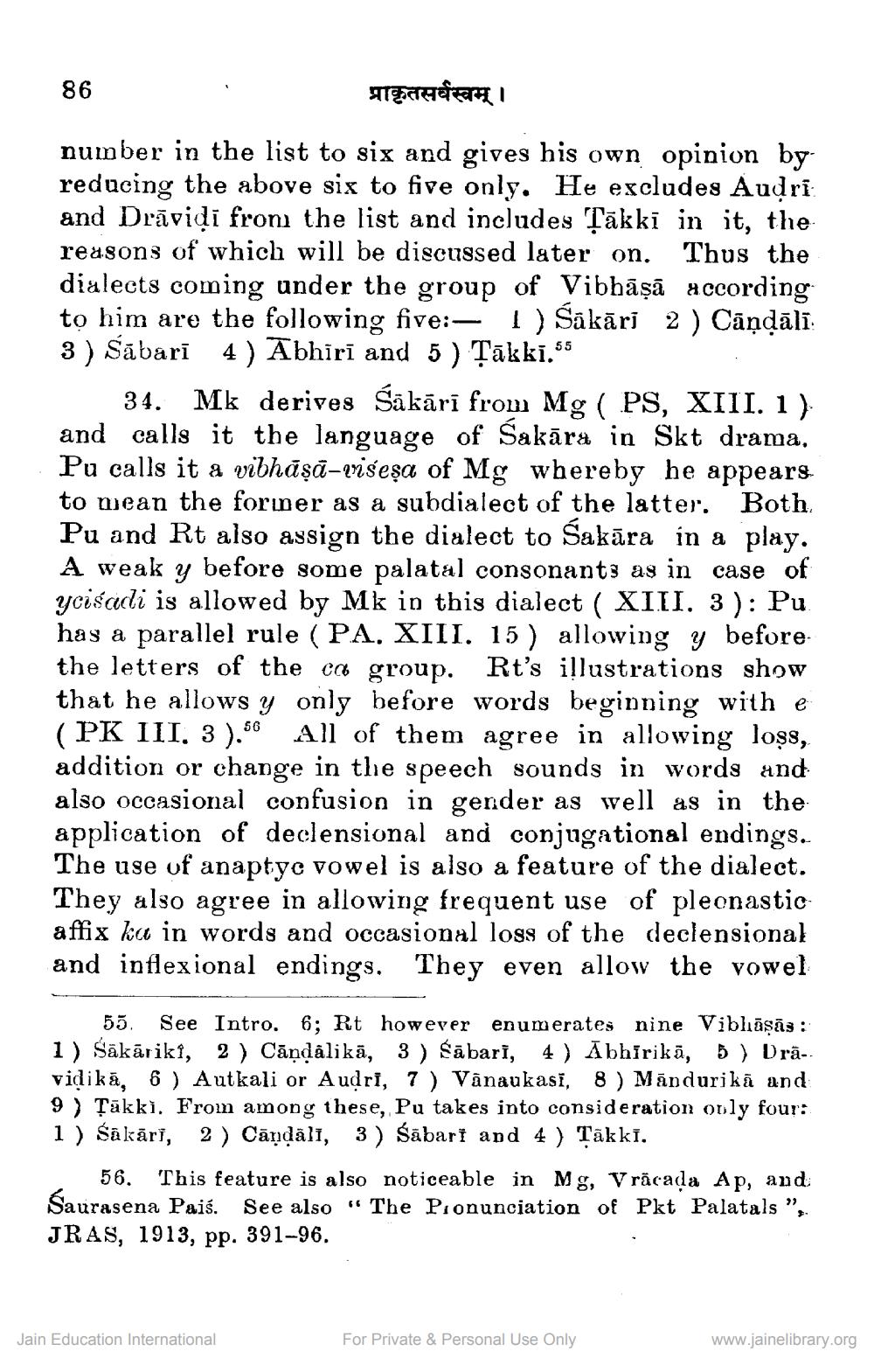________________
86
प्राकृतसर्वस्वम् ।
number in the list to six and gives his own opinion by reducing the above six to five only. He excludes Audri and Dravidi from the list and includes ļākki in it, the reasons of which will be discussed later on. Thus the dialects coming under the group of Vibhāṣā according to him are the following five:— 1) Sākārī 2 ) Cāņdālī. 3) Sābari 4) Abhirī and 5 ) Tākki.55
34. Mk derives Śākārī from Mg ( PS, XIII. 1 ) and calls it the language of Sakāra in Skt drama, Pu calls it a vibhāṣā-riseşa of Mg whereby he appears to mean the foriner as a subdialect of the latter. Both Pu and Rt also assign the dialect to Sakāra in a play. A weak y before some palatal consonants as in case of yciścci is allowed by Mk in this dialect ( XIII. 3): Pu. has a parallel rule ( PA, XIII. 15) allowing y before the letters of the ca group. Rt's illustrations show that he allows y only before words beginning with e ( PK III. 3 ).56 All of them agree in allowing loss, addition or change in the speech sounds in words and also occasional confusion in gender as well as in the application of declensional and conjugational endings. The use of anaptyc vowel is also a feature of the dialect. They also agree in allowing frequent use of pleonastic affix ku in words and occasional loss of the declensional and inflexional endings. They even allow the vowel
55. See Intro. 6; Rt however enumerates nine Vibhāṣās : 1) Sākāriki, 2 ) Cāņdālikā, 3) Sābari, 4 ) Abhirikā, 5) Drāvidikā, 6) Autkali or Audri, 7 ) Vānaukasi, 8) Māndurikā and 9) Tākkì. From among these, Pu takes into consideration only four: 1 ) Śā kārī, 2 ) Candāli, 3) Śābari and 4 ) Tākki.
56. This feature is also noticeable in Mg, Vrăcada Ap, and Saurasena Paiś. See also “ The Pronunciation of Pkt Palatals”, JRAS, 1913, pp. 391–96.
Jain Education International
For Private & Personal Use Only
www.jainelibrary.org




